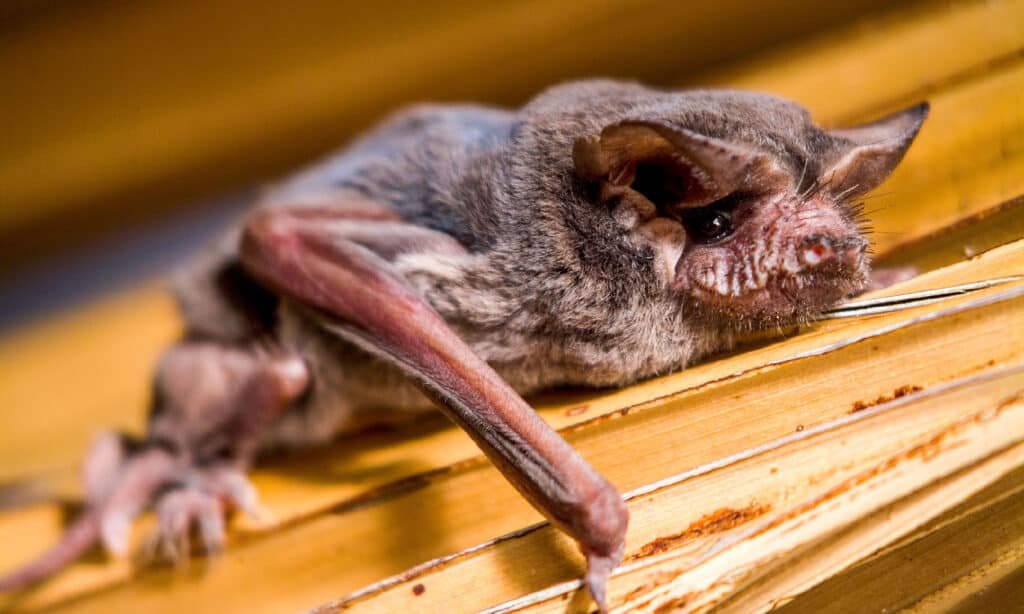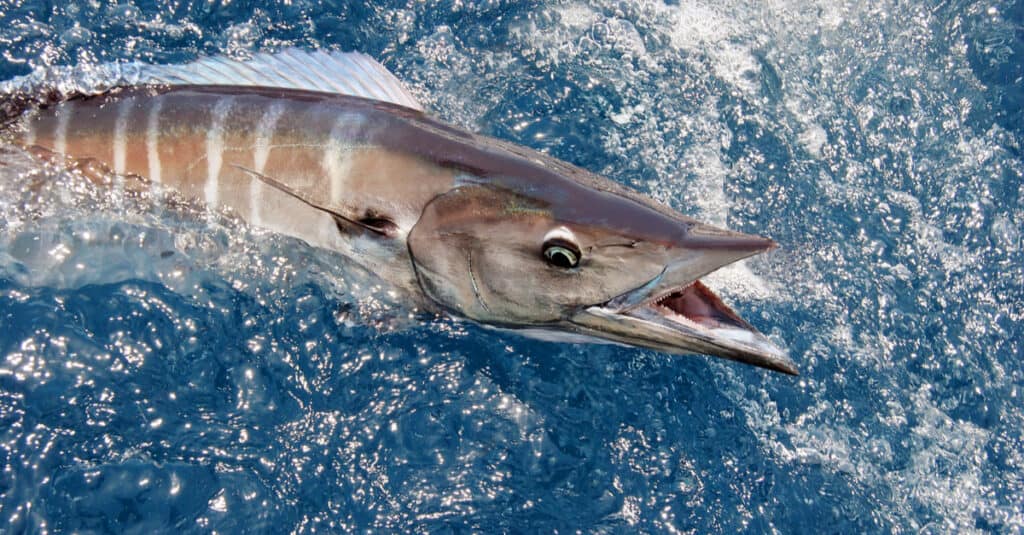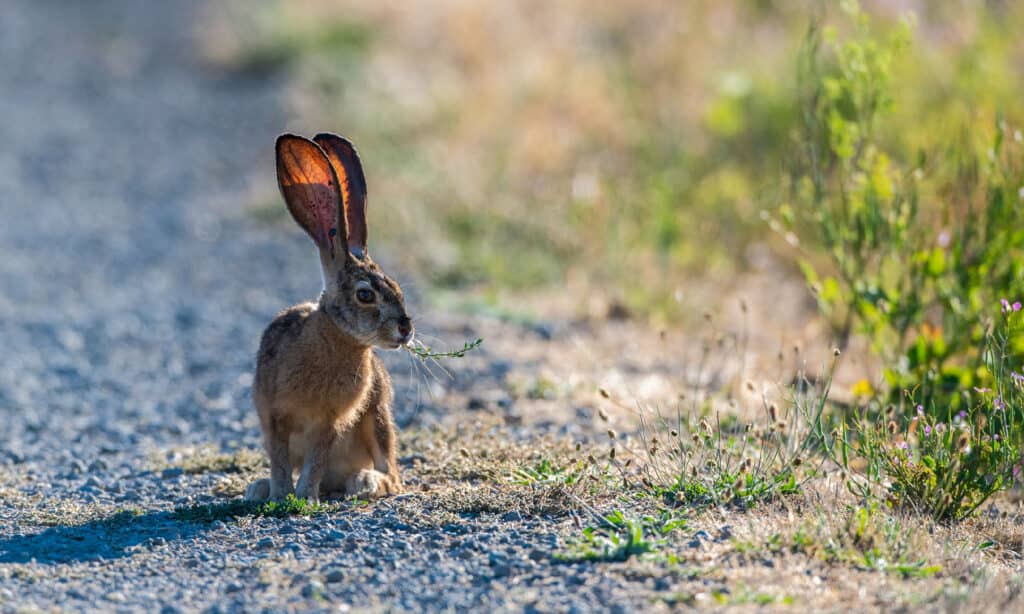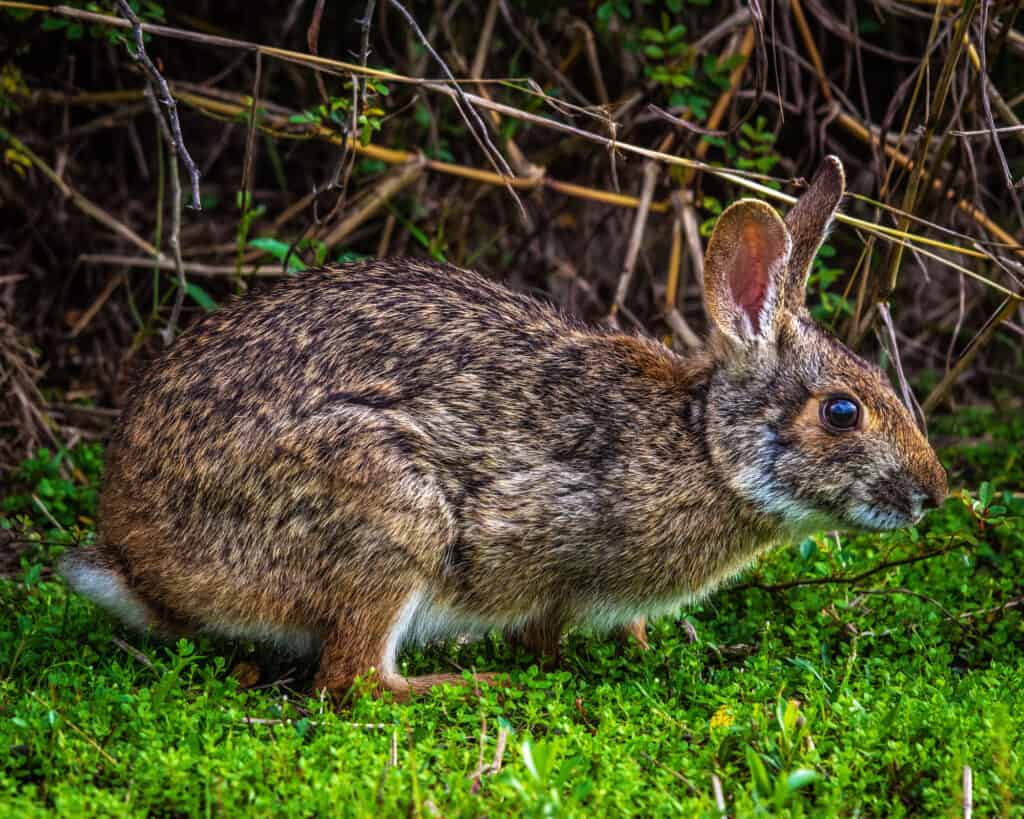Florida is known for heat, humidity, and theme parks, but you may not be aware that it is also one of the most biodiverse states in the country, with more than 3,000 plant species and over 4,000 animals. The sunshine state has a subtropical climate. Geographically, it falls between temperate and tropical regions. This “tension zone” allows plants, animals, and microorganisms to thrive. With all this assortment, there are bound to be a few speedy creatures. Discover the fastest animals in Florida of air, land, and sea!
1. Peregrine Falcon – 240 mph

The peregrine falcon can reach a speed of 240 miles per hour.
©Harry Collins Photography/Shutterstock.com
Falcons beat most animals went it comes to speed. But the peregrine falcon wins by quite a lot compared to most species. They are the fastest animals on earth, reaching up to 240 miles per hour! Their bodies are engineered to reach and withstand intense dives, featuring aerodynamic bodies and sharply curved beaks that allow them to breathe freely. These swift-soaring birds are relatively rare in Florida and typically only appear during fall migration. You may also find them along shores and in cities during the winter. Look for them soaring high in the skies near wide open spaces.
2. Brazilian Free-Tailed Bat – 100 mph

The Brazilian free-tailed bat can fly at 100 miles per hour.
©iStock.com/MalcolmB2
While the peregrine falcon may be the fastest animal in the world, gravity gives them an advantage as they dive through the air. According to research from the University of Tennessee at Knoxville, Brazilian free-tailed bats can fly level to the ground at around 100 miles per hour. They fly similarly to birds and feature narrow wings with pointy tips, which aid in their extreme speeds. This speedy flying mammal lives throughout Florida and is the state’s most common bat species. They roost primarily in man-made structures like attics, sheds, and bridges.
3. Wahoo – 60 mph

The wahoo fish are large fish and one of the fastest in the ocean.
©Neophuket/Shutterstock.com
Wahoos are large fish found in tropical and subtropical waters, and they are one of the fastest in the ocean, reaching up to 60 miles per hour. However, they don’t travel at those speeds for long. They can reach these incredible rates using quick bursts to catch their prey. However, their average speed hovers around 48 mph (still very fast). Wahoo bodies are torpedo-shaped, and they are aggressive hunters who take off like a bullet once they catch sight of something. They are prized game fish due to their high-quality flesh. But good luck catching one. Fishermen have had to change their gear to keep up with these speedsters by using improved tackle, lures, and faster boats.
4. Black-Tailed Jackrabbit – 40 mph

Black-tailed jackrabbits have powerful hind legs to propel them forward.
©iStock.com/zhuclear
The black-tailed jackrabbit is not native to Florida; it was introduced in the 1920s and 30s to train greyhounds for racing. Apparently, the rabbits excite the dogs with all their jumping and running. These speedsters can run over 40 mph and leap up to ten feet! Only fast predators like hawks and coyotes can catch up to them as they zip and leap over their meadow terrain. They have powerful hind legs that can propel them upward and forward in quick bursts to escape predation.
5. Florida Panther – 35 mph

During attacks, Florida panthers can reach a speed of 35 miles per hour.
©jo Crebbin/Shutterstock.com
The Florida panther is a subspecies of mountain lion found in South Florida, where it resides in pinelands and freshwater swamp forests. This big cat can be distinguished from others by the cowlick on its back and its crooked tail. Florida panthers hunt by creeping up behind their prey and launching a short-spring attack, typically lasting a few hundred yards. But during these launch attacks, they can reach 35 miles per hour. If you’re wondering if that’s faster than a human, yes, it is. These mountain lions are swift and agile due to their large, powerful legs and flexible spines, which allow them to leap more than 15 feet in the air.
6. Swamp Rabbit – 30 mph

You can find the swamp rabbit in Florida’s marshes.
©Lawrence Jefferson/Shutterstock.com
The swamp rabbit, also known as the “cane-cutter,” is a large cottontail native to Florida’s marshes and flooded agricultural fields. These rabbits are known for their zig-zag running patterns, but when they run in a straight line, they can reach speeds up to 30 miles per hour. They typically only get this max rate when evading predators, leaping quickly through marsh terrain, and even crossing fast-flowing streams easily. Rabbits can reach impressive speeds and quick acceleration due to their fast-twitch muscle fibers. Their muscles are stronger than a cheetah’s!
7. Dolphin – 25 mph

A popular spot to see dolphins is the Florida Keys.
©iStock.com/Michelle de Villiers
A dolphin’s average cruising speed is between eight and ten miles per hour, but it can reach 25 mph when traveling at full throttle. However, they can only maintain this rate for a short distance because it hurts them to swim this fast. They use their tails as propellors, but the nerve endings make it painful to continually produce these “shock waves” that drive them forward. The Florida Keys is one of the most popular spots to see dolphins year-round. But make sure you visit during late May to early August for the best views.
Up Next:
- Discover the Fastest Animals in Tennessee
- Discover the Fastest Animals in North Dakota
- The 10 Fastest Animals In North America
- Discover the Fastest Animals in New Jersey
The photo featured at the top of this post is © Harry Collins Photography/Shutterstock.com
Thank you for reading! Have some feedback for us? Contact the AZ Animals editorial team.







